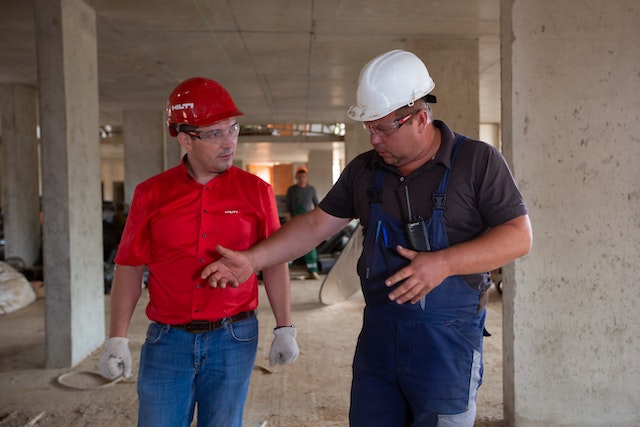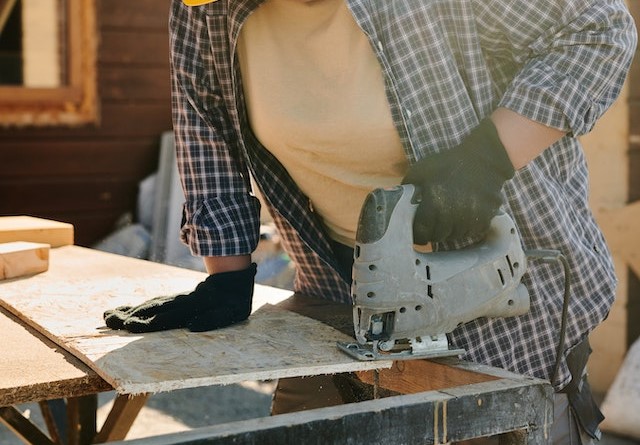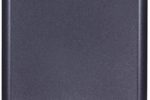How To Use A Reciprocating Saw For Demolition Work

So you want to know how to use a reciprocating saw for demolition work, huh? Well, the first thing you need to do is figure out what the job entails, and get yourself the proper tools (no, a kitchen knife won’t cut it… pun intended).
Alright, let’s start with scoping out the job. Take a look around and assess the task that needs to be done. Figure out the size and type of materials that will need to be cut, and make sure it’s an effective use of time instead of just “trial and error”.
Next step is assessing the right tool for the task. Is the reciprocating saw the right tool for the job? Will a jigsaw be more effective? If the answer is yes to either one of these questions then grab the right tool. If a recip saw is the tool of choice, make sure that the blade is compatible with whatever you’re cutting.
Now that you have the right tool in hand, it’s time to get to work. Before operating, be sure to read the safety instructions carefully. Position your body properly before letting the saw do its thing. Once the saw is running, make sure you’re completely aware of where your body and hands are at all times. And, wear proper protective gear to avoid any possible injury.
Now that you understand how to operate the saw and how to stay safe, let’s look at the official resources for demolition work with a reciprocating saw. Read the manufacturer’s instructions, and check any safety regulations that may exist depending on the job.
So there you have it, a step-by-step guide on how to use a reciprocating saw for demolition work. Just remember to read the safety instructions, always wear protective equipment, and make sure you have the right tool for the job. Now go out there and show ’em what you can do!
Scoping Out the Job

Hey there everyone, if you’re here it’s probably because you need to do some demolition work and you’re not quite sure how to use a reciprocating saw for it, yeah? Well, I’m no engineer, and I don’t have any fancy certificates, but I have done my fair share of demolition work and I’m here to tell you that using a reciprocating saw is totally within the realm of possibility! So, let’s get to it.
When it comes to scoping out the job, the most important thing you can do is assess the area that you’ll be working in. Start by looking for any potential hazards or dangers. You don’t want to accidentally knock out an electrical cable or something like that, so look out for anything that could cause you harm. Once you’ve gotten the safety stuff out of the way, measure the space that you’re working with, and make sure to account for any size or shape variations. This will help you figure out what kind of saw you’ll need, and it’ll also give you a better idea of the shape and size of the cuts you’ll be making.
When you’re scoping out the job, don’t forget to consider the materials you’ll be cutting through. Different materials require different techniques, so make sure to get comfortable with the materials you’re working with before you start your demo. If you have wood, metal, or any other material that you need to be aware of, make sure to get the correct blades and guide bars for the job.
Finally, make sure you’re familiar with the area surrounding your demo as well. If you have any adjacent walls or furniture you’ll have to take into account, you’ll need to make sure you don’t accidentally damage them.
So, that’s about it for scoping out the job. It’s not quite as straightforward as it sounds, but if you prepare yourself properly, you should be able to get the job done with ease. Good luck!
Assessing the Right Tool for the Task

If you’re anything like me, one of the most important parts of getting a job done is having the right tools for the task. And when you’re about to embark on a demolition job, you better make sure you got the right saw.
First things first. How can you figure out which saw you should use? It’s not as simple as it might sound. Of course, you need something that can handle demolishing walls, cement, and other materials. But, you also need to make sure that the saw you choose is powerful enough to meet your demands, while also remaining safe. That’s where the reciprocating saw comes in.
Also known as a sawzall (yes, even I can’t help but giggle at the word), a reciprocating saw is a versatile, durable demolition tool that’s perfect for demolition jobs of all shapes and sizes. It has a number of features that make it great for this type of work, including an adjustable blade speed, adjustable blade types, and different power source options.
For most demolition jobs, a corded or cordless reciprocating saw will do the trick. But, if you’re really wanting to get into some serious demolition work – like knocking down brick walls or concrete – you’re going to want a corded saw with higher amperage. To put it in layman’s terms, more amps is more power.
Once you’ve got the right saw for the job, there’s just one important reminder: safety. Just because it’s a demolition job doesn’t mean you should let your guard down. Always follow manufacturers’ instructions, and wear protective gear.
With the right saw, safety precautions and the right amount of patience, you can get the job done right with a reciprocating saw. So, go ahead – get to sawing!
Operating the Saw

Operating a reciprocating saw isn’t as hard as it looks. As long as you have read the operator’s manual and understand all the safety protocols, you should be ready to start your demolition job.
When loading the blade into the reciprocating saw, it is best to use the clamping assembly. Hold the saw in a straight line through the jaws of the clamp as you press down on the clamp body head and turn it slightly until it clicks. Ensure that you tighten the clamping assembly to prevent it from shaking and loosening itself.
Now it’s time to start the saw. Use the switch provided on the handle and turn the saw to the appropriate speed setting. On most reciprocating saws, this can range from 1,000 to 3,000 rpm. With the saw on, use it for all its intended purposes, such as cutting wood, metal and other material. Begin by engaging the blade with the material, then applying pressure with both hands. Push the blade through, allowing the tool to do the cutting.
It is important to know that while using the reciprocating saw, you should always keep the saw moving at all times. This is to prevent it from overworking and heating up and causing the blade to break. Keep the blade speed consistent and strive to maintain the same motion throughout the whole process. While using the saw, stay in a balanced and stable position and always keep both your hands on the tool when cutting.
When you are done using the saw, let it come to a complete stop and unplug it before replacing its blade. To ensure that no one injures themselves during the process, make sure to keep the blade covered by its guard at all times when the saw is not in use.
Although the subject of demolition work can be intimidating and that a lot of people are afraid to try it, with a little practice and effort, you can make short work of your project. With that in mind, you should now be ready to use the reciprocating saw for demolition work. Just remember to make safety your priority, read the user manual thoroughly and with a bit of practice, you’ll have you demolition job done in no time.
Making Safety Your Priority
Well hey there, fellow construction fanatics! Today we’re discussing staying safe while using a recirpocating saw for demolition work.
First things first — safety should always be your top priority when operating a reciprocating saw. That means making sure you have the right protective gear, like hard hats, safety glasses, ear protection, and steel-toed boots, before you dive into that project. Besides, no one wants to get hurt while wreckin’ stuff!
Even after you’ve purchased the right PPE, you still want to make sure you’re using the reciprocating saw correctly and safely. Don’t put too much pressure on the saw as you operate, let the blade and motor do the work for you. Don’t force it, consider it your pal, and it will do what it’s supposed to.
When you’re dealing with power tools, you’ve got to keep your hands away from the business end of the saw. Safety hands, gloves, and other hand protection are essential not just for comfort but to prevent injury. If you happen to hit a nail or a foreign object in the work-piece you’re cutting, the sawmotor can kick the blade back at you or heat up and burn you. You’ve been warned!
Don’t wear any jewelry or loose-fitting clothing when you’re using a recip saw. Long-sleeved shirts, loose-hanging jewelry, and baggy pants can get caught in the saw and rather than demolish that wall, you could end up tearing yourself to pieces! So keep your clothes snug-fitting and leave the jewelry at home.
The final essential safety tip is to unplug the saw before you set it down and prepare to change the blade. If the saw is still plugged in and switched on, kicking the plug out of its socket can cause you to shock yourself or cause an electrical fire.
Remember, safety first, do the job right the first time and you’ll have no worries! Now let’s get cutting!
Following the Official Resources

When working with a reciprocating saw, you should always make sure to follow the official resources for the saw’s operation. Depending on the brand and make of the saw, there can be some slight variations on the usage of the saw.
Carefully read through the instruction manual that comes with the reciprocating saw. This manual will include the safety protocols for operating the saw, such as when and how to use the safety features and what kind of eye protection is needed. It can also include diagrams and drawings of the saw’s parts and how they interact with each other.
You should also pay attention to the manufacturer’s website for specific resources that might help you with understanding how to use your saw. Manufacturers often have instructional videos, brochures, and other materials that can help you understand how to properly use the tool.
Of course, don’t forget the power of word of mouth. Don’t be afraid to reach out to pros in the industry to ask how they use their tools. They may have some great tips and tricks for using your saw in a safe and efficient manner. Just remember to filter out any possible bias in their advice.
Finally, don’t forget to follow the safety protocols from your saw’s original manufacturer when using the tool, even if someone tells you that those protocols are outdated or unnecessary.
Properly using the reciprocating saw for demolition work requires proper understanding of the tool’s usage and capabilities. Don’t feel ashamed to ask for assistance if this is your first time using the saw. And when you do get it, always be sure that you are following official resources and instructions to ensure your safety and the success of your demolition job.






